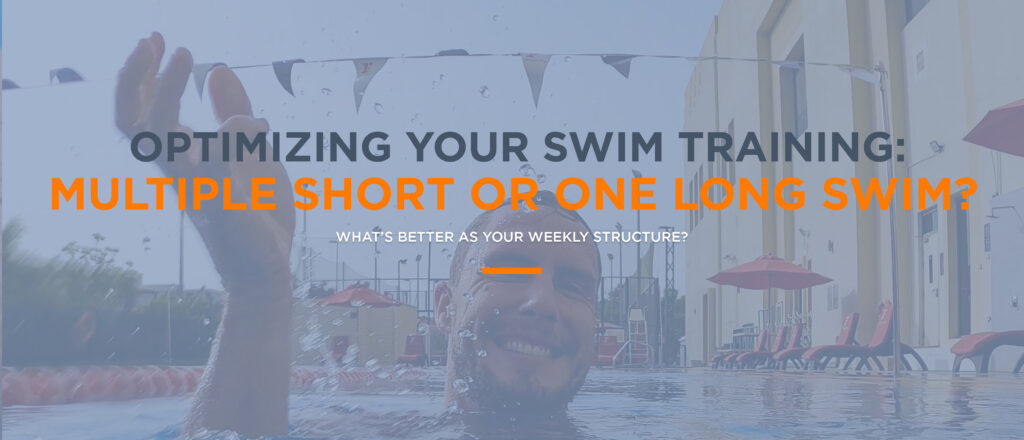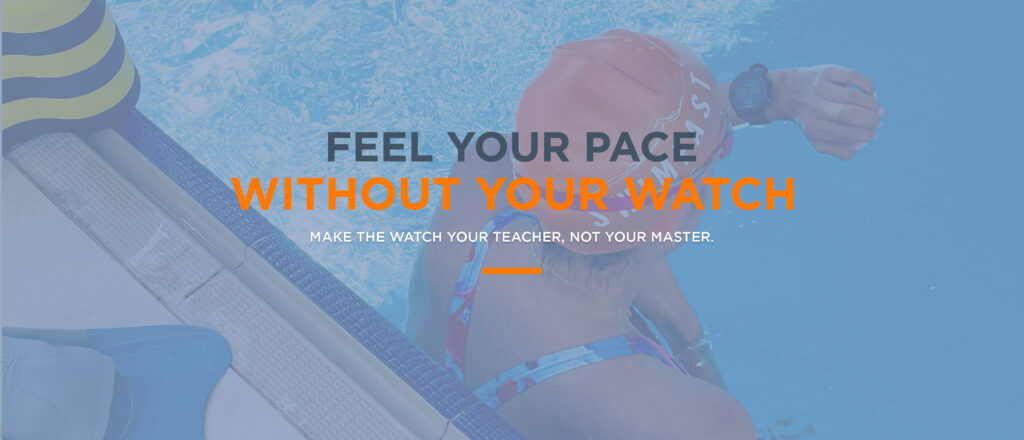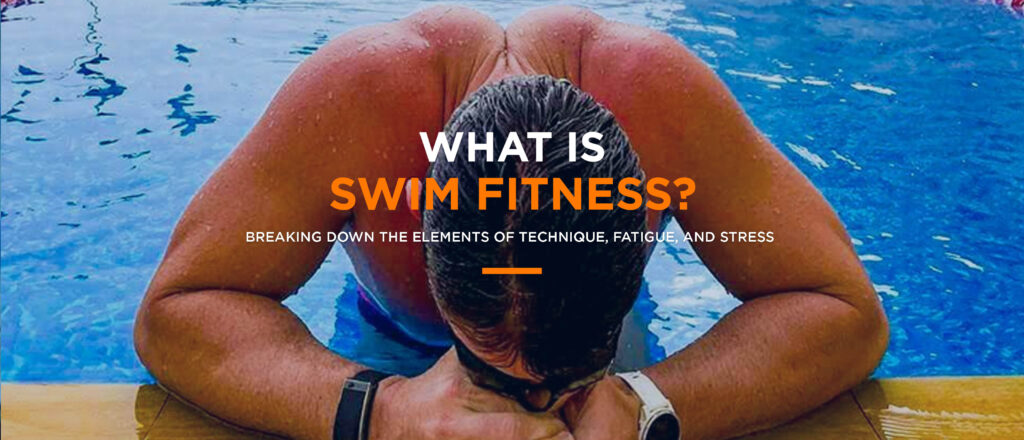Slow Sucky Swim Days
“This trip to the pool was a waste… I’m swimming slow and still have so much left to do. I should give up now… I feel like I am exerting a ton of energy and almost getting nowhere… Why is life so hard? This swim is hell. I hate swimming. I am terrible at it and it never gets any easier.”
Have you ever had this conversation with yourself during a workout?
I bet you have.
We ALL have.
Sucky-Slow-Swim Days (SSSD) happen. They even happen to the very best athletes in the world. They also happen to me and I’m sure they happen to you too.
Your swim success on race day isn’t dependent on avoiding Sucky-Slow-Swim Days (SSSD).
Your swim success on race day is dependent on how you deal with Sucky-Slow-Swim Days (SSSD).
Age Group Triathletes are more likely to have SSSD than swimmers or Pro Triathletes, and here’s why;
The more you swim, the less prone you are to SSSD’s.
When I was training for the 2012 Olympics I was in the pool 11 times a week. We’d get through 25+ hours of water time in those 11 sessions.
My training these days looks A LOT different to what it looked like back then. I don’t have the time nor the motivation to swim for 25+ hours a week. Like many other Age Group triathletes, I swim 3 times a week for roughly an hour.
I’ve noticed something interesting with my own training and see it with my clients too. With the lower total swim time each week, my times are far less consistent than they used to be.
There are a lot more SSSD’s and when they happen, I’m much slower than my goal times!
When training 25 hours a week on a SSSD, I would be 1 second off my 100m goal pace… and I remember feeling so frustrated even with 1 second!
Nowadays, on 3 hours a week, if I’m having a SSSD, I can be between 4-6 seconds off my 100m goal pace!! WTF?!
Last week I had a SSSD. Sunday’s session was bang on. Tuesday’s swim was a nightmare, but Thursday, I was right back on pace!
Why Do SSSD’s Happen?
- You’ve briefly lost your feel for the water
- “Feel” is a swimming term that describes how quickly and how much water you can grab. How much water you can hold and push back with each stroke. The more the better! The more you swim (less time between your swim sessions), the more your body will remember the “feel” for the water
- You’re more fatigued
- Balancing the training of three sports is tough. Very seldom will you be completely recovered from the training you did the day before. This plays a role on your speed and ability to hit your goal times.
- Other factors
- There are countless other reasons why SSSD’s happen to AG Triathletes. Changes in technique. Bad stroke habits that creep back in. Stress from work or life. Lack of sleep. Not eating right. Dehydration. Some of them you can control, others you can’t, but they all play a role.
You Have A Choice To Make On SSSD’s
Regardless of the reason, SSSD’s happen and when they do, you have a choice to make.
Going through my SSSD workout on Tuesday, I could have had that conversation with myself. The “…this trip to the pool was a waste… I’m swimming slow and still have so much left to do. I should give up now…” conversation.
But I didn’t. I pushed through, and I want you to push through too.
SSSD’s can be constructive workouts that make you a better swimmer. Missing your goal times doesn’t always mean that you are wasting you time with a workout.
How To Deal With SSSD’s
Think of your fitness like a savings account at a bank.
Each time you work out you are making a deposit into your account. Over time you’ll build up enough of a reserve to be able to write a nice big cheque on race day.
Let’s say your goal is to deposit $100 into your account every time you workout. When you hit all your goal times, $100 gets deposited and saved.
On some days, you’ll have a SSSD and for whatever reason you miss your goal times. Perhaps you’re stressed at work and didn’t sleep well. Today you only have $50 (or less) to deposit.
You Make The Decision
On SSSD’s, you have two choices:
1. Choose not to make a deposit today.
Because it’s not $100 (which is the goal) you could say, “…this is a waste of time, I won’t make a deposit today”. You then quit your workout and leave without adding any amount at all to your bank account savings.
2. Decide that $50 is better than $0 and make the best of what you’ve got to deposit today.
If you deposit $50 on two days this week, you’ll have $100 saved. Not quite as much as the $200 you might have planned, but 100% more than the $0 you would have had if you quit and left the pool! Whether its money or fitness, it all adds up no matter how small.
Switch Your Focus
Training is not a continuous upward trajectory in a straight line. If you only swim 3 hours a week, you’re not going to have $100 to deposit every time you hit the water.
That is ok! Take the SSSD’s in your stride.
Switch your focus to effort and maintain your intensity. Put forward the best effort you can, today. Deposit whatever you have to offer. Over the long run, with time and consistency, you will be richer and fitter because of it!
Having a few too many slow sucky swim days? Leave me a comment on what’s happening each time you swim.
~ Rory









5 thoughts on “How To Deal With A Bad Swim Workout”
Thanks, Rory! I’m three weeks in learning to swim (properly) for the first time, so this is really helpful. So far I think I’ve quasi-accidentally felt actual balance, alignment, and propulsion all at once for a couple of strokes in a row and was surprised at the feeling! Loved it! Thanks for all the amazing resources here. I’ve printed out the swim for Tri guide and bring it to the pool with me 🙂 Back to the balance drills…
Hey Genevieve! That’s awesome to hear – glad you’ve found things to help you! Keep working on one piece at a time and your “quasi-accidental” encounters will become far more regular and consistent! Anything specific comes up that you need help with, shoot me an email!
~ Rory
Hey Rory! I’m an age group triathlete – I don’t come from a swim background but I’m a decent swimmer, it’s surely my weakness but my struggle is the inconsistency. I work with my coach on swim form a fair amount and I will swim relatively fast sets, and hit relatively fast times (for me), but then it’s like it never happened and it seems like I take 1 step forward and 5 back. Some days I can be up to 10 seconds off my 100 pace and feel like I’m giving the effort of the pace 10 seconds faster… and usually I have no idea why. I know initially it was form, which I have a quick tendency to revert back to but we just did form work and I am fairly positive my form is still pretty good. I will swim my fast 100s at ~ 1:12 -1:16 on full rest, but then struggle to hit 4x100s on 1:30 a couple days later when I used to be able to hit 10x100s on 1:30. Today I swam 1600 straight at a 1:43 pace which felt like my best effort I could give today when previously I could swim 2000 straight at ~ 1:33 pace feeling strong. Some days a 1:43 pace feels like a warm up, now suddenly it’s like an all out effort? I recently worked on keeping my elbows up on the catch which is causing my arms to fatigue a lot more and I know there’s some adjustment there – but it seems like I’m always taking 1 step forward then 5 steps back. When I hadn’t really worked on my form and I wasn’t swimming with the greatest form I was hitting the fastest times it seems like, and now I know my form is “better” yet I’m swimming much slower and inconsistently. I know fatigue plays a part – but is it normal to have days where you’re that far off and feel like you are all across the board on some swims? It won’t just be one swim for me then the next is good, I go through like a week or a couple weeks where I struggle sometimes?
I try to balance my workouts so I don’t notice the SSSD as much. If I’m a bit tired, I switch to a longer endurance swim where I expect to be a bit slower than race pace. On days I feel better, I try for a HIIT day where I can work on improving pace. Then maybe once a month during the off season, I rest up and go for a “pace day” where I get to see how I am actually coming along with my training. If I’m not trying to be on pace every day, I am psychologically better with a swim that might be a bit slower.
Paul
(Age Group Triathlete – 63 yrs old)
Hey Paul, sounds like you have a very sensible approach to your swims. Nice work! Your mind set and the set up of how you balance your training load has a big impact on how you end up swimming, so 90% of the battle is won with that balanced approach. Do you follow a rigid / structured swim program (or training program)? Or do you just do what you feel like doing on any given day?